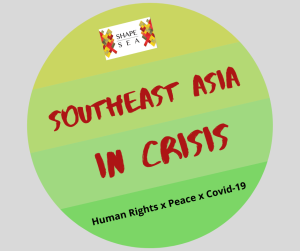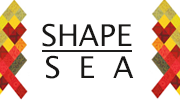Saw Lin HtetStudent, Asia Pacific MA Human Rights and DemocratisationGlobal Campus of Human Rights Asia PacificInstitute of Human Rights and Peace Studies, Mahidol University
 In Myanmar, 282 mothers out of 100,000 perish due to limited access to reproductive health services. This number is nearly ten times higher than in Thailand. Thirty percent of maternal death occurs among 62 percent of deliveries performed at home. The situation is worse in the rural areas with a higher death rate where there is limited access to reproductive health services due to poverty, geographical barriers, shortages of health workers, especially midwives (UNFPA, 2020). Furthermore, the World Health Organization (WHO) (2016) asserted that “Pregnant women must be able to access the right care at the right time” in order to reduce the risks of pregnancy implications. Currently, “the overload of the health system threatens pregnant women and newborns” across the globe (UN, 2020).According to Article 12, General Comment 14, and 22, International Covenant on Economic, Social, and Cultural Rights (ICESCR), every woman has the right to safe pregnancy. Convention on the Elimination of all Forms of Discrimination Against Women (CEDAW) Article 1 also provides form the protection of pregnant women from direct and indirect discrimination. The Government of Myanmar had drafted the Protection and Prevention of Violence Against Women (PoVAW) Bill. The Bill is still being reviewed, according to the Alliance for Gender Inclusion in the Peace Process (AGIPP).Due to the fragile health system in Myanmar, pregnant women are less able to access to health care services. Furthermore, amid COVID-19 and government regulations that address the pandemic, a significant number of pregnant women have lost their jobs, livelihood, family income, and/or support from the community. This conditions directed impacted their means to access health care services (ActionAid, 2020). Moreover, pregnant women in conflict-affected areas have become more vulnerable due to the armed conflict in Rakhine, Chin, Shan, and Karen states. During the SARS outbreak in 2002-2003, pregnant women faced higher risks of miscarriage (Chapa, 2020). Pregnant women in Kayah and Karen state who came back from Thailand expressed that the absence of treatment for morning sickness during the night, water, and sanitation were particularly challenging for them (Khing and KIC, 2020). Expecting mothers are also experiencing more fear, anxiety, and uncertainty due to this pandemic (UNICEF, 2020).Currently, Myanmars Livelihoods and Food Security Fund (LIFT), a one-time financial support provided 30,000 Myanmar kyats (21.4 USD), pregnant women and mothers with children aged under 2 years (Htoon, 2020). The Ministry of Health and Sports also developed “clinical management guidelines for COVID-19 infection in pregnancy,” in which it advises providing public awareness, including the hospital’s hotline numbers (MOHAS, 2020).According to the United Nations Children’s Fund (UNICEF), pregnant women must protect themselves from the virus. However, exiting structures should allow to closely monitor their conditions and seek medical advice anytime, anywhere… They should also be able to consult their midwives or doctors for a safe place for giving birth. Government and healthcare providers should be able to help pregnant women receive antenatal checkups and postnatal care if needed. Health care workers should be allowed to safely conduct home visits for pregnant women and using teleconsultations. Furthermore, the government should provide protective equipment, allocate resources, and health facilities for before, during, and after birth (UN News, 2020). Pregnant women need to adequately consume healthy food, safe drinking water, and be able to rest, during and after giving birth. According to WHO, all pregnant women have the right to high-quality care before, during, and after (HNN, 2020).Pregnant women are made more vulnerable by the conditions set by COVID-19 in Myanmar, wherein both political and health systems are fragile. Sadly, information about the situation of pregnant women is not available in Myanmar during the COVID-19 pandemic (Htwe, 2020). Pregnant women across the country should not be left out from exercising their rights despite an emergency situation. Furthemore, their voices and concerns should be addressed at all times.References:ActionAid, 2020. COVID-19 crisis: Myanmar’s garment worker at greater risk of domestic violence. 1 May. Available at: < https://actionaid.org/news/2020/-19-crisis-myanmars-garment-workers-greater-risk-domestic-violence> .AGIPP (2020). Prevention and Protection of Violence Against Women Bill. Available at: https://www.agipp.org/en/issuesaffectwomen/prevention-and-protection-violence-against-women-bill .Chapa, H., 2020. What mothers-to-be need to know about coronavirus. MyanmarTimes news. 1 April. Available at: < https://www.mmtimes.com/news/what-mothers-be-need-know-about-coronavirus.html> .HNN, 2020. Pregnancy and -19: Lessons so far. Health Newborn Network. 14 April. Available at: < https://www.healthynewbornnetwork.org/blog/pregnancy-and–19-lessons-so-far/> .Htoon, K. L., 2020. Workers, mothers and elderly to benefit from $25m in -19 foreign aid. Frontier Myanmar News. 10 April. Available at: < https://frontiermyanmar.net/en/workers-mothers-and-elderly-to-benefit-from-25m-in–19-foreign-aid> .Htwe, N. E. E., 2020. Pandemic pregnancies. MyanmarTimes news. 15 May. Available at: https://www.mmtimes.com/news/pandemic-pregnancies.html .Khaing, M., 2020. A pregnant woman from Loikaw quarantined as -19 suspect. Eleven Media Group. 12 March. Available at: < https://elevenmyanmar.com/news/a-pregnant-woman-from-loikaw-quarantined-as–19-suspect> .MOHAS, 2020. Clinical Management Guideline For -19 Infection in Pregancy. Ministry of Health and Sports. 3 April. Available at: http://mohs.gov.mm/ckfinder/connector?command=Proxy&lang=en&type=Main¤tFolder=%2FNews%2FNews_2020%2FMarch_2020(C)%2F&hash=a6a1c319429b7abc0a8e21dc137ab33930842cf5&fileName=CLINICAL%20MANAGEMENT%20GUIDELINE%20FOR%20OG%20(3-4-2020).pdf .UN News, 2020. Coronavirus: Health system overload threatens pregnant women and newborns. 7 May. Available at: < https://news.un.org/en/story/2020/05/1063422> .UNFPA, 2020. Asia and Pacific Region, -19 Situation Report No.3. 1-13 May. United Nations Population Fund. Available at: <https://reliefweb.int/sites/reliefweb.int/files/resources/APRO_-19_Regional_Sitrep_%233_May%202020.pdf> .UNFPA, 2020. Sexual & reproductive health. Available at: https://myanmar.unfpa.org/en/node/15221 .UNICEF, 2020. Navigating pregnancy during the coronavirus disease (-19) pandemic. 11 May. Available at: < https://www.unicef.org/coronavirus/navigating-pregnancy-during-coronavirus-disease–19-pandemic> .WHO, 2016. Pregnant women must be able to access the right care at the right time, says WHO. World Health Organization. 7 November. Available at: < https://www.who.int/news-room/detail/07-11-2016-pregnant-women-must-be-able-to-access-the-right-care-at-the-right-time-says-who> .
In Myanmar, 282 mothers out of 100,000 perish due to limited access to reproductive health services. This number is nearly ten times higher than in Thailand. Thirty percent of maternal death occurs among 62 percent of deliveries performed at home. The situation is worse in the rural areas with a higher death rate where there is limited access to reproductive health services due to poverty, geographical barriers, shortages of health workers, especially midwives (UNFPA, 2020). Furthermore, the World Health Organization (WHO) (2016) asserted that “Pregnant women must be able to access the right care at the right time” in order to reduce the risks of pregnancy implications. Currently, “the overload of the health system threatens pregnant women and newborns” across the globe (UN, 2020).According to Article 12, General Comment 14, and 22, International Covenant on Economic, Social, and Cultural Rights (ICESCR), every woman has the right to safe pregnancy. Convention on the Elimination of all Forms of Discrimination Against Women (CEDAW) Article 1 also provides form the protection of pregnant women from direct and indirect discrimination. The Government of Myanmar had drafted the Protection and Prevention of Violence Against Women (PoVAW) Bill. The Bill is still being reviewed, according to the Alliance for Gender Inclusion in the Peace Process (AGIPP).Due to the fragile health system in Myanmar, pregnant women are less able to access to health care services. Furthermore, amid COVID-19 and government regulations that address the pandemic, a significant number of pregnant women have lost their jobs, livelihood, family income, and/or support from the community. This conditions directed impacted their means to access health care services (ActionAid, 2020). Moreover, pregnant women in conflict-affected areas have become more vulnerable due to the armed conflict in Rakhine, Chin, Shan, and Karen states. During the SARS outbreak in 2002-2003, pregnant women faced higher risks of miscarriage (Chapa, 2020). Pregnant women in Kayah and Karen state who came back from Thailand expressed that the absence of treatment for morning sickness during the night, water, and sanitation were particularly challenging for them (Khing and KIC, 2020). Expecting mothers are also experiencing more fear, anxiety, and uncertainty due to this pandemic (UNICEF, 2020).Currently, Myanmars Livelihoods and Food Security Fund (LIFT), a one-time financial support provided 30,000 Myanmar kyats (21.4 USD), pregnant women and mothers with children aged under 2 years (Htoon, 2020). The Ministry of Health and Sports also developed “clinical management guidelines for COVID-19 infection in pregnancy,” in which it advises providing public awareness, including the hospital’s hotline numbers (MOHAS, 2020).According to the United Nations Children’s Fund (UNICEF), pregnant women must protect themselves from the virus. However, exiting structures should allow to closely monitor their conditions and seek medical advice anytime, anywhere… They should also be able to consult their midwives or doctors for a safe place for giving birth. Government and healthcare providers should be able to help pregnant women receive antenatal checkups and postnatal care if needed. Health care workers should be allowed to safely conduct home visits for pregnant women and using teleconsultations. Furthermore, the government should provide protective equipment, allocate resources, and health facilities for before, during, and after birth (UN News, 2020). Pregnant women need to adequately consume healthy food, safe drinking water, and be able to rest, during and after giving birth. According to WHO, all pregnant women have the right to high-quality care before, during, and after (HNN, 2020).Pregnant women are made more vulnerable by the conditions set by COVID-19 in Myanmar, wherein both political and health systems are fragile. Sadly, information about the situation of pregnant women is not available in Myanmar during the COVID-19 pandemic (Htwe, 2020). Pregnant women across the country should not be left out from exercising their rights despite an emergency situation. Furthemore, their voices and concerns should be addressed at all times.References:ActionAid, 2020. COVID-19 crisis: Myanmar’s garment worker at greater risk of domestic violence. 1 May. Available at: < https://actionaid.org/news/2020/-19-crisis-myanmars-garment-workers-greater-risk-domestic-violence> .AGIPP (2020). Prevention and Protection of Violence Against Women Bill. Available at: https://www.agipp.org/en/issuesaffectwomen/prevention-and-protection-violence-against-women-bill .Chapa, H., 2020. What mothers-to-be need to know about coronavirus. MyanmarTimes news. 1 April. Available at: < https://www.mmtimes.com/news/what-mothers-be-need-know-about-coronavirus.html> .HNN, 2020. Pregnancy and -19: Lessons so far. Health Newborn Network. 14 April. Available at: < https://www.healthynewbornnetwork.org/blog/pregnancy-and–19-lessons-so-far/> .Htoon, K. L., 2020. Workers, mothers and elderly to benefit from $25m in -19 foreign aid. Frontier Myanmar News. 10 April. Available at: < https://frontiermyanmar.net/en/workers-mothers-and-elderly-to-benefit-from-25m-in–19-foreign-aid> .Htwe, N. E. E., 2020. Pandemic pregnancies. MyanmarTimes news. 15 May. Available at: https://www.mmtimes.com/news/pandemic-pregnancies.html .Khaing, M., 2020. A pregnant woman from Loikaw quarantined as -19 suspect. Eleven Media Group. 12 March. Available at: < https://elevenmyanmar.com/news/a-pregnant-woman-from-loikaw-quarantined-as–19-suspect> .MOHAS, 2020. Clinical Management Guideline For -19 Infection in Pregancy. Ministry of Health and Sports. 3 April. Available at: http://mohs.gov.mm/ckfinder/connector?command=Proxy&lang=en&type=Main¤tFolder=%2FNews%2FNews_2020%2FMarch_2020(C)%2F&hash=a6a1c319429b7abc0a8e21dc137ab33930842cf5&fileName=CLINICAL%20MANAGEMENT%20GUIDELINE%20FOR%20OG%20(3-4-2020).pdf .UN News, 2020. Coronavirus: Health system overload threatens pregnant women and newborns. 7 May. Available at: < https://news.un.org/en/story/2020/05/1063422> .UNFPA, 2020. Asia and Pacific Region, -19 Situation Report No.3. 1-13 May. United Nations Population Fund. Available at: <https://reliefweb.int/sites/reliefweb.int/files/resources/APRO_-19_Regional_Sitrep_%233_May%202020.pdf> .UNFPA, 2020. Sexual & reproductive health. Available at: https://myanmar.unfpa.org/en/node/15221 .UNICEF, 2020. Navigating pregnancy during the coronavirus disease (-19) pandemic. 11 May. Available at: < https://www.unicef.org/coronavirus/navigating-pregnancy-during-coronavirus-disease–19-pandemic> .WHO, 2016. Pregnant women must be able to access the right care at the right time, says WHO. World Health Organization. 7 November. Available at: < https://www.who.int/news-room/detail/07-11-2016-pregnant-women-must-be-able-to-access-the-right-care-at-the-right-time-says-who> .





